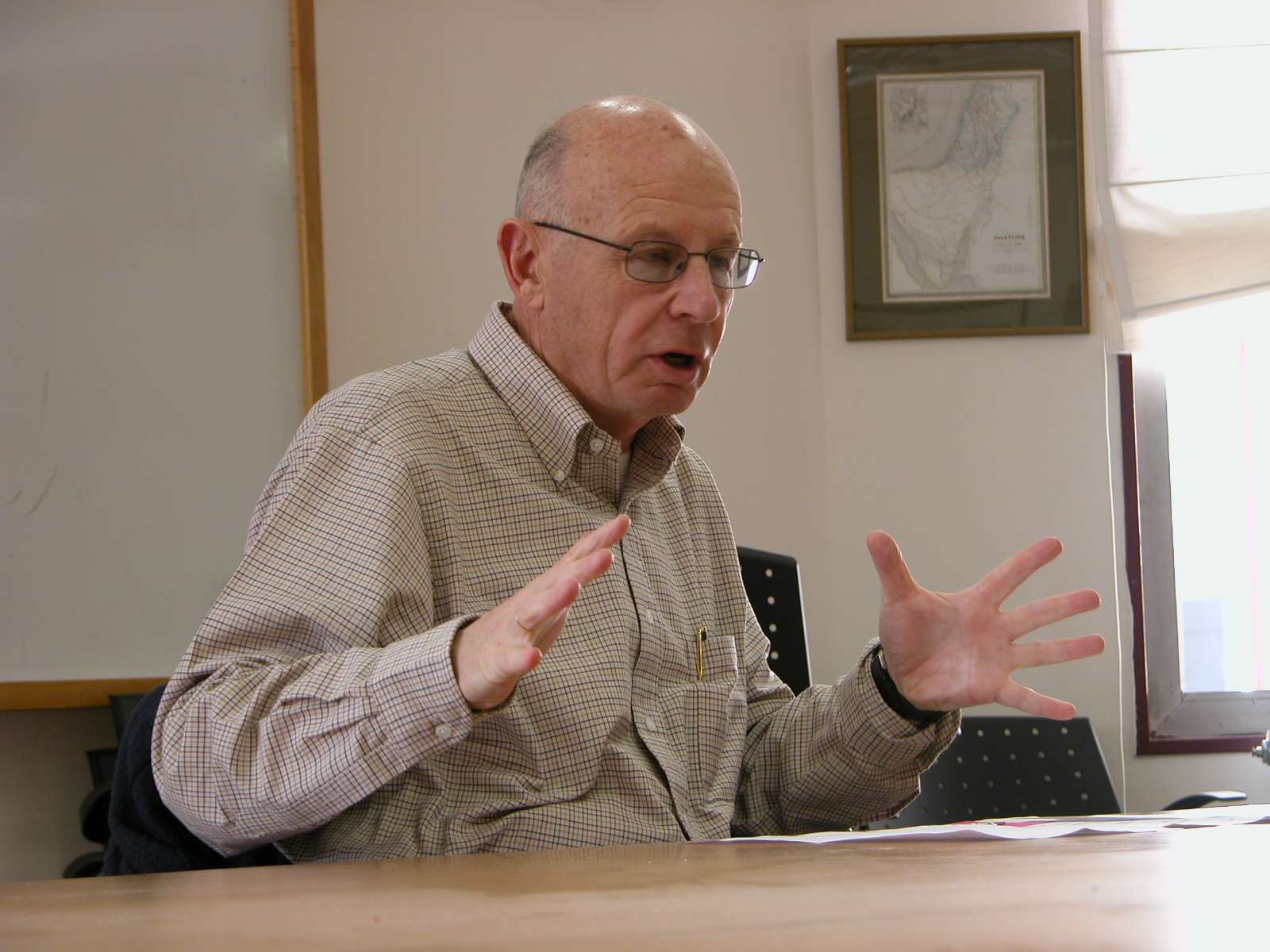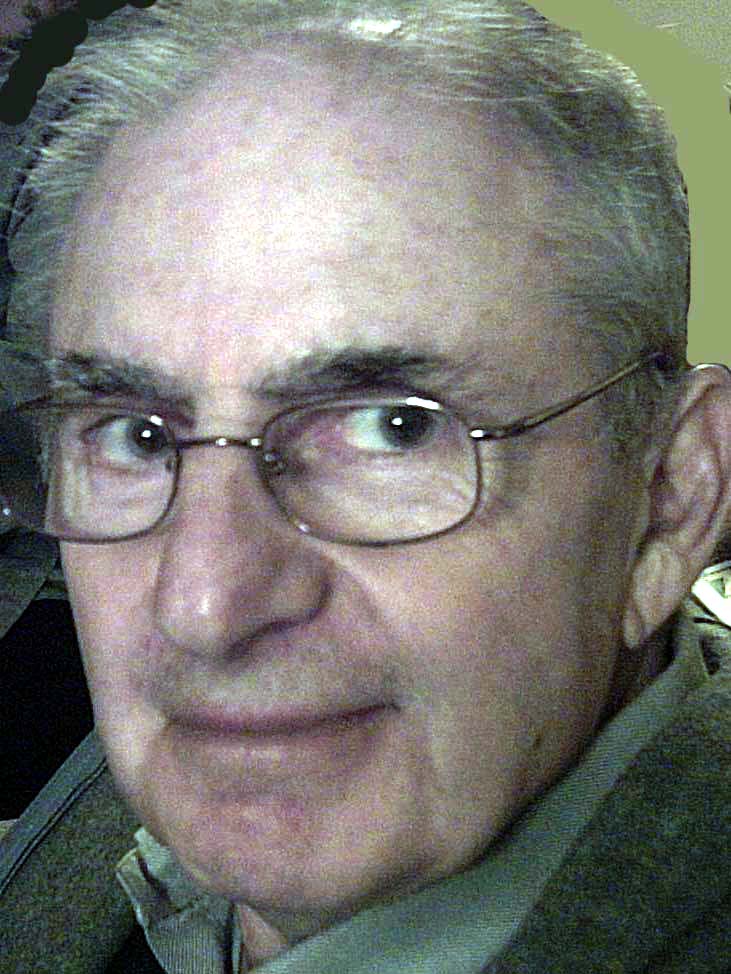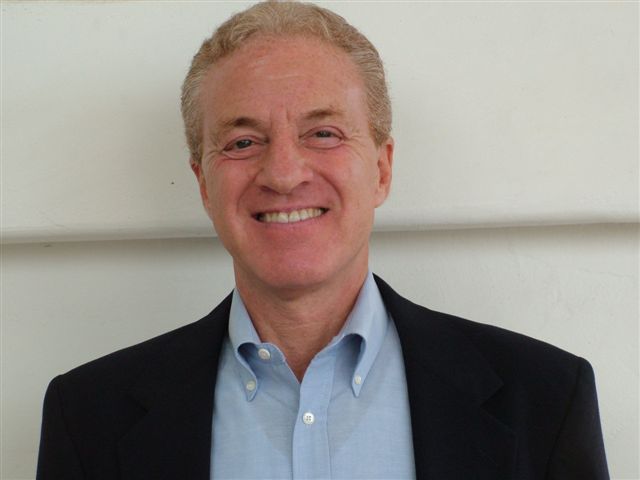San
Diego Jewish World
Saturday Evening , July
28, 2007
Vol. 1, Number
89
|
Archives Event Tracker HOME Jewish Directory Jewish Grapevine Jews in the News News Sleuths Sports |
| PLEASE SUPPORT OUR ADVERTISERS; THEY ARE HELPING TO BRING San Diego Jewish World TO YOU: America's Vacation Center Bubbla Packaging Systems I'm There For You Baby radio show In the Know' radio show JCC Maccabi games Jewish American Chamber of Commerce Jewish Community Foundation Journey to the copper age Museum of Man Lecture Series Old Town Trolley Tours of San Diego Seacrest Village Retirement Communities |
In today's news... click on their
captions to go to their stories









Cahen
Kahn
Winton
Goldstein
Sanders
Youkilis Feldman
Olshansky The
Deception
|
San Diego Jewish World—July
28, 2007
U.S. House Resolution honors British lord who Restaurant with family flavor opens in La Mesa
|
Weizmann Institute and
Princeton scientists team REHOVOT, Israel (Press Release)—Often, things can be improved by a little 'contamination.' Steel, for example is iron with a bit of carbon mixed in. To produce materials for modern electronics, small amounts of impurities are introduced into silicon – a process called doping. It is these impurities that enable electricity to flow through the semiconductor and allow designers to control the electronic properties of the material. Scientists at the Weizmann Institute of Science, together with colleagues from the U.S.A., recently succeeded in being the first to implement doping in the field of molecular electronics – the development of electronic components made of single layers of organic (carbon-based) molecules. Such components might be inexpensive, biodegradable, versatile and easy to manipulate. The main problem with molecular electronics, however, is that the organic materials must first be made sufficiently pure and then, ways must be found to successfully dope these somewhat delicate systems. This is what Prof. David Cahen and postdoctoral fellow Dr. Oliver Seitz of the Weizmann Institute’s Material and Interfaces Department, together with Drs. Ayelet Vilan and Hagai Cohen from the Chemical Research Support Unit and Prof. Antoine Kahn from Princeton University did. They showed that such 'contamination' |
|
is indeed possible, after they succeeded in purifying the molecular layer to such an extent that the remaining impurities did not affect the system’s electrical behavior.
The scientists doped the 'clean' monolayers by irradiating the surface with UV light or weak electron beams, changing chemical bonds between the carbon atoms that make up the molecular layer. These bonds ultimately influenced electronic transport through the molecules.
This achievement was recently described in the Journal of the American Chemical Society (JACS). The researchers foresee that this method may enable scientists and electronics engineers to substantially broaden the use of these organic monolayers in the field of nanoelectronics. Dr. Seitz: 'If I am permitted to dream a little, it could be that this method will allow us to create types of electronics that are different, and maybe even more environmentally friendly, than the standard ones that are available today.'
The preceding story was provided by the Weizmann Institute
 Letter from Jerusalem By Ira Sharkansky |
Now, with Abbas talking
peace, comes the hard part
It is easy dealing with an implacable enemy. With Hamas in control of
Palestine, Israel's options are simple. The government can remain on the
good side of the world's humanitarians by providing enough food, fuel,
water, and electricity to keep the population alive, but no more. The IDF
tries to keep them off balance with occasional targeted killings, and
nightly sweeps to collect a few more of the bad people for the swelling
population of security prisoners, now said to be about 11,000.
Now that Hamas has gained control over Gaza and Fatah has fled to the West Bank, the problems begin for Israeli policymakers.
Fatah is the party of Yassir Arafat, and his successor Mahmoud Abbas (Abu Mazan). These are the people who have targeted Israeli civilians since the 1960s, and provide most of Israel's security prisoners. But compared to Hamas, they have a high incidence of secular Muslims, and are willing to say that they will live in peace alongside Israel.
The latest pronouncement of Fatah policy does not mention an armed struggle against Israel. Wow. However, it does adhere to the goal of a Palestine in pre-1967 boundaries, a capital in Jerusalem, and the treatment of refugees according to United Nations decisions.
Alas, they are forced to say nice things at the present time. It is either get some assistance and protection from Israel, or face the prospect of Hamas taking over the West Bank. The folks currently holding on to the West Bank remember one colleague thrown from the roof of a 15 story building in Gaza, and several others found guilty in street corner trials and punished very severely, very quickly.
Let's assume that the concept of pre-1967 boundaries is sufficiently flexible to give Israel the large settlements over those boundaries, and that "Jerusalem" is large enough and ambiguous enough to give them a capitol complex somewhere in what they will call al-Quds (the holy city). The stickier problems are all those United Nations General Assembly resolutions recognizing the right of return for Palestinian refugees. They are non-binding in terms of international law, but fall within what Palestinians call their non-negotiable rights.
Are
we still in square one?
(Jump to continuation)


{Click the above ad for more information}
 Dov Burt Levy
Dov Burt LevyA Hit Movie with Unpopular Actors? |
SALEM, Massachusetts—You know that much of politics is political theater, scripts designed to make the actors look good and give the audience a sense of pride and well-being. How well we know that during this election cycle, as some 20 presidential wannabees ply their theatrical trade.
So, let's look at President Bush's Newly Revised Middle East Peace Process plan as a film, a sequel to a sequel to a sequel stretching back for decades. Something like Bruce Willis's "Die Hard" series, except, as my friend Bernie put it, "Bush is no Willis."
On July 16, President Bush announced his plan to revive the Middle East Peace Process.
Co-star Ehud Olmert, a new actor and Israel's prime minister, replaces Ariel Sharon, who remains shrouded in a coma in Israel; Mahmoud Abbas, president of the Palestinian Authority, replaces the late Yasser Arafat.
The famous quartet (the United States, Russia, the European Union and the U.N.) will recite their familiar lines.
The extras from previous movies, AIPAC, ADL, and the American Jewish Committee, have already jumped to support the Bush initiative.
Entering from the political left, Peace Now criticized the plan for leaving Hamas out of the cast of characters.
And from stage right, the Zionist Organization of America argued that
Abbas is like Arafat, a bad actor, not to be trusted to make peace with
Israel, even if Israel were to make major concessions.
(jump
to continuation)
U.S. House
Resolution honors British lord who
helped save European children from Nazis
WASHINGTON, D.C (Press Release) — U.S. Rep. Ron Klein (FL-22), along with Rep. Lincoln Diaz-Balart (FL-21) introduced a resolution on Friday honoring Sir Nicholas “Nicky” Winton, who helped 669 children escape from Nazi refugee camps in Czechoslovakia and find safety in Great Britain and Sweden. Sir Nicholas’ actions saved the lives of these children, since most of their families who remained in Czechoslovakia perished.
“A resolution honoring the heroic efforts of Sir Nicholas Winton is long overdue, and I’m honored to join my colleague from Florida, Congressman Lincoln Diaz-Balart, in introducing this resolution,” said Klein. “Sir Nicholas never sought praise or recognition for saving the lives of 669 children, many of whom went on to be doctors, nurses, teachers, ministers, pilots, and even a British Member of Parliament. In fact, the story of Nicholas Winton was discovered by his wife, when she came across lists of children and letters from their parents stored in an old briefcase. He risked his own life to save the lives of hundreds of others, and it is a privilege for me to be a part of this effort to commend him in Congress. ”
“It is an honor to introduce this resolution honoring Sir Nicolas Winton with my colleague from Florida, Congressman Ron Klein,” said Congressman Diaz-Balart. “Nicolas Winton helped save the lives of over 600 children by assisting them in their escape from the horrors of Nazi refugee camps to find safety in Great Britain and Sweden. Nicolas Winton never sought credit or fame for his heroism. In fact, his actions went unrecognized for more than half a century, even by his family and the children who for years did not know to whom they owed their lives. Nicolas Winton risked his own life so that others could live in freedom. This resolution is long overdue and it is a privilege for me to be part of this effort to recognize him in the U.S. Congress,” concluded Diaz-Balart.
Earlier this week, Klein and Diaz-Balart circulated a Dear Colleague urging Members of Congress to co-sponsor their resolution. Currently, over 35 Members are co-sponsoring this resolution.
Nicholas
Winton has been honored with the title of Member of the British Empire (MBE),
was awarded the Freedom of the City of Prague, received the Czech Order of T. G.
Masaryk, and was given a knighthood from Queen Elizabeth II for services to
humanity. He is 97 years old
|
|
Adventures in Cruising
Carnival
Elation--San Diego-Mexico
|
 Freedom
at Issue Freedom
at IssueBruce Kesler |
Higher college standards stimulate achievement
ENCINITAS, California—
The New York Times reports that “CUNY
Plans to Raise Its Admissions Standards.”
The chancellor said he had long planned to ratchet up standards further. The new move, which has been discussed with some college presidents but has not been announced publicly, is also a response to some professors’ complaints that too many students are poorly prepared for college work, especially in math….
“We are very serious in taking a group of our institutions and placing them in the top segment of universities and colleges,” said Matthew Goldstein, the university chancellor, who described the plan in an interview. “That is the kind of profile we want for our students.”
When I started at Brooklyn College, C.U.N.Y. in 1964, on the first day of freshman math the professor gave us the final exam, saying that any who coul
dn’t pass it didn’t deserve to be at Brooklyn College. We all passed, and the professor spent most of the rest of the term in one of the most fascinating expositions – no one cut class— of the nuances of Alice In Wonderland.At that time, Brooklyn College ranked in the top tier of American colleges. To be admitted, you had to rank in the top 2% in the country. I barely squeaked in.
Brooklyn College and the other senior colleges of C.U.N.Y. currently rank well, in the top 400, and C.U.N.Y. trying to recapture its former stature.
That’s a challenge.
CUNY is proud of its legacy as a supportive environment for immigrant talent. At present, 40% of our more than 400,000 students were born outside the United States. These students represent nearly 170 nationalities and speak 120 different languages.
My aunt Muriel, now 90 and still able to out-debate me, was one of Brooklyn College’s first students. When she began primary school, she only spoke Yiddish. She hammered me mercilessly in high school to try harder, because getting into Brooklyn College was all we could afford, and it was an outstanding launch in life. C.U.N.Y. graduates were considered top rate.
(Jump to continuation)
California, Arizona & Nevada
sales positions
|
Senator Sanders chides President Bush for failing
to visit only one state in the country: Vermont
WASHINGTON (Press Release)—President Bush has been to 49 states, but not Vermont. During more than six years in the White House, he also has traveled to 62 nations, some more than once, but not Vermont. "Do I think it is a coincidence that this is the last state, the only state that the president has not visited?" Senator Bernie Sanders wondered aloud during a Burlington press conference. "No, I don't think that it's a coincidence. "
Sanders personally invited the president to visit Vermont. He brought it up at a White House reception earlier this year.
"I think he understands that he is not enormously popular in this state," Sanders allowed. "But, let me be very frank. He is the president of all 50 states, and I hope he has the decency and the courage to come to the State of Vermont. That's his job as the president of the United States. Furthermore, I hope he will do what he very rarely does, and that is, in a respectful meeting, answer the questions that people have. He is the president of the United States and he deserves to be treated with respect."
White House spokesman Tony Snow told CBS News correspondent Mark Knoller, who keeps close tabs on the president's travel, that Bush has no plans at the moment to visit Vermont.
"Visit Vermont" used to be the slogan on our license plates, the Bennington Banner recalled in an editorial that urged Bush to do just that. "Americans — especially Vermonters — like to see a politician who can face his critics in person," the Banner wrote.
Before Bush was sworn in as president in 2001, there was concern abroad about his lack of foreign-policy experience. The Mirror, a London tabloid, printed a front-page picture of a globe with an arrow pointing to Britain, under the headline: "P.S. We are here."
Maybe the Mirror got the president's attention. Bush has been to Great Britain four times.
Next stop Vermont?
(Return to top)
School board member apologizes for Nazi taunt
BOSTON (Press Release)
—Taunton School District Committee man Alfred Baptista has apologized for giving
a Jewish colleague a Nazi salute during a public meeting. The Anti-Defamation
League (ADL) and other organizations had denounced the gesture as insulting not
only to Board chair Barry Cooperstein, but to the memory of the Six Million
victims of the Holocaust as well.
"The words I used were inappropriate and thoughtless, but were not meant to be a
racial or ethnic slur in any way," Baptista said in a statement
According to eyewitness complaints as well as reports in both The Taunton
Gazette and The Enterprise, during a July 18 meeting with school
board's nursing subcommittee Baptista stated, "Yes, heil Hitler. Sieg heil" in
response to a comment by Cooperstein. While uttering the remark, Baptista also
reportedly raised his arm in a manner suggestive of a Nazi salute.
In a letter to Baptista, James L. Rudolph, ADL New England Regional Board Chair, and Andrew H. Tarsy, Regional Director, said: "The use of Holocaust imagery during a public meeting in this context demeans the memory of the six million Jews and others who died at the hands of the Nazis. Comments like this are indicative of a misunderstanding of the horrors perpetrated by the Nazi regime and are deeply offensive.
"We believe that you owe Mr. Cooperstein, the Jewish community, and the people of Taunton an apology for your remarks and gestures made during this meeting," the ADL leaders said.
Taunton Mayor Charles Crowley also called for an apology. Crowley, who attended the meeting, told The Enterprise, "the comments were outrageous." The mayor added: "The choice of words was so offensive to Mr. Cooperstein, as a member of the committee and a member of the Jewish faith. It was offensive to every person of Taunton."
A July 19 Taunton Gazette editorial called for Baptista to step down, calling the remarks "racist" and adding: "no one in the district, in the city, in the county, in the state or in the nation should tolerate it."
The
preceding story was provided by the Anti-Defamation League
500-year-old Korean mummies may provide
clues to combat hepatitis B, says Israeli scientist
JERUSALEM (Press Release)— Mummies that have recently been unearthed in South Korea may provide clues on how to combat hepatitis B, according to Prof. Mark Spigelman of the Kuvin Center for the Study of Infectious and Tropical Diseases at the Hebrew University of Jerusalem.
This is the first time that samples of hepatitis B have ever been found on a mummified body. When the virus was discovered in the liver of the 500-year-old remains of a child, researchers at Dankook University and Seoul National University invited Spigelman to South Korea to verify the findings.
Spigelman and the Liver Unit at Hadassah University Hospital-Ein Kerem in Jerusalem are now part of an international team to conduct research on the mummies, bringing together experts from Dankook University, Seoul National University and University College London.
Spigelman known for his pioneering studies of ancient diseases (palaeoepidemiology) has researched mummified bodies from Hungary to Sudan, in his quest to provide answers to the development of diseases affecting us today, such as tuberculosis, leishmania and influenza. The South Korean mummies are particularly well preserved, and could provide crucial information in the evolution of the hepatitis B virus.
Hepatitis B causes liver problems and can lead to liver cancer or liver failure, killing approximately one million people each year.
In South Korea, the need to manage the virus is particularly significant, as twelve percent of the population are hepatitis carriers (compared with a world average of five percent). In China, the virus is one of the leading causes of cancer.
Until recently, no one even knew that mummies existed in Korea. Korea's ancient tradition of ancestor worship and the belief that at death, the soul rises up and the body has to go back to its natural components, without interference by external elements, meant that mummification was in fact anathema in Korean culture. However, with the take-over of the neo-Confucianist Joseon Dynasty in 1392, changes were made to the former Buddhist burial practices.
The burial process involved laying the body on ice for three to thirty days during mourning, placing the body inside an inner and an outer pine coffin, surrounded by the deceased's clothes, and then covering the coffin in a lime soil mixture. "In some cases, this inadvertently resulted in extremely good natural mummification," says Spigelman.
The building boom in South Korea has meant that many cemeteries have had to be relocated. It is this process which led to the discovery of the mummified bodies.
The researchers intend to study the genome of the 500 year old virus to see if there have been any significant changes over this time. Spigelman asks: "Five hundred years ago, was it hepatitis B? Could it be that later on, it split from 'X' and became A and B? Was it already evolved? That's what we don't know."
"This is a 'know
your enemy' expedition to see if we can get information that can help today's -
and tomorrow’s - sufferers," says Spigelman. He believes that knowing what a
virus did 500 years ago helps us understand what it will do as it continues to
evolve, and will ultimately alter the practice of public health officials in
combating it.
The preceding story was provided by
Hebrew University.
 Jews
in the News Jews
in the News
-------------------------------------------------------------------------------------------------------- Like you, we're pleased when members of our community are praiseworthy, and are disappointed when they are blameworthy. Whether it's good news or bad news, we'll try to keep track of what's being said in general media about our fellow Jews. Our news spotters are Dan Brin in Los Angeles, Donald H. Harrison in San Diego, and you. Wherever you are, if you see a story of interest, please send a summary and link to us at sdheritage@cox.net and we'll acknowledge your tip at the end of the column. To see a source story click on the link within the respective paragraph. |
*Rabbi James L.
Brooks,
who has been
executive producer of The Simpsons from the onset of the cartoon
series, remembers television's Tracey Ullman Show better than
perhaps most people do. He was the producer of that too, and came
up with the idea of short animated "bumpers" to run before and after the
show. The bumpers developed into the series that has now
spawned a movie. The
story by Geoff Boucher is in the Los Angeles Times.
*Homeland Security Secretary Michael Chertoff has been
reforming his agency's allocation system for anti-terror grants.
Although residents of San Francisco and Los Angeles are unhappy with
reductions, overall California has received a greater allocation with
increases going to San Diego, Orange County and other parts of the San
Francisco Bay area. An op-ed
piece by Veronique du Rugy is in today's Los Angeles Times.
*Martin Cominsky, Houston region director of the Anti-Defamation
League, describes Quanell X as someone who "has sought to exaggerate
differences rather than build on commonalities." But the flashy
militant, who gets a large share of media time whenever there is racial
controversy, has a keen following in the African American community.
The
profile of Quanell X by Miguel Bustillo is in today's Los Angeles
Times.
*Israel and its friends in
the U.S. Congress are said to be nervous about a deal the White House is
finalizing with Saudi Arabia for the sale of $20 billion worth of
advanced military equipment over the next decade. To make it more
palatable, Israel would receive $30 billion worth of high tech weaponry
under the developing proposal. The New York Times News Service
story by David S. Cloud is in today's San Diego Union-Tribune.
*U.S. Sen. Joe Lieberman
(Independent, Connecticut), who chairs the Senate Homeland Security and
Governmental Affairs Committee, says the anti-terrorism bill approved by
the Senate on Thursday and by the House on Friday will "make our nation
stronger." Among provisions is a requirement to phase-in
inspections of all luggage aboard airplanes and all cargo on ships.
The Associated Press story is in today's Los Angeles Times.
*Massachusetts Superior Justice Allan Van Gestel has dismissed
a suit by Michael Redstone accusing his uncle, Viacom Chairman
and Chief Executive Officer Sumner Redstone of having obtained
his controlling interest in a predecessor company by fraud through stock
transactions in 1972 and 1984. The judge ruled that a three-year statute
of limitations applied in the case. The
story by Michael A. Hiltzik is in today's Los Angeles Times.
*The cautionary tale of former Assemblyman Keith Richman (Republican, Los Angeles) who was a moderate ally of Governor Arnold Schwarzenegger is cited by political strategists to explain why Republican legislators do not rally around the governor. When Richman found himself in a tough primary for state treasurer, Schwarzenegger did not intervene in his behalf and Richman was defeated. The story by Jordan Rau and Evan Halper is in today's Los Angeles Times.
*Los Angeles County Supervisor Yvonne Brathwaite-Burke
has been residing in a posh Brentwood mansion rather than the Mar Vista
apartment that she lists as her official residence, the Los Angeles
Times
reports. The problem? The law requires supervisors to
live within the districts they represents and her mansion is in the
district represented by Zev Yaraslovsky.
The
story is by Jack Leonard and Matt Lait.
(Return to top)
________________________

Click the ad above to go to the "I'm there for you baby" website
The Jewish Grapevine

|
COMMUNITY INTEREST NEWS—Not
all stories
affecting the
Jewish community and/or Israel involve Jews as direct participants, so
they really don't quite fit the requirements for the "Jews in the News"
column above. Yet, there obviously is a community interest in such
stories, so we will endeavor to provide links to them in this space:
● Columnist Charles Krauthammer is joining those who believe that Barack
Obama's positive answer to a question during the YouTube Debate
concerning whether he would sit down with the leaders of Iran, Syria,
and other rogue states indicates that he is too inexperienced in the
foreign affairs arena to be president. His
column is in today's
CYBER-REFERRALS—Jay Jacobson, a voracious collector of all points of view on Israel and the Middle East, sends to us this month's online issue from the Israeli left, called "The Other Israel." Here is the link.
Restaurant with family flavor opens in La Mesa
Jewish community members Oscar & Olga Worm did at their new restaurant in La Mesa. At top left, Olga
carves up some beef; next to her, daughter Marla Worm, who often performs in community revues, belts out a song; next patron Robert Baum wearing a U.S.-Israel pin in his hat, enjoys some barbecue, and pack animals get ready for another round of giving rides. The Worms raise llamas at a ranch in Alpine. West Coast Barbecue is located at 6126 Lake Murray Boulevard in La Mesa.

{Click the above ad for more
information}
 The Jewish Sports Fan
The Jewish Sports Fan
 |
Unless otherwise indicated, source for these stories is today's edition of
The San Diego Union-Tribune, to which we gratefully provide the links below.
We do not apply halacha to determine if a player is Jewish; rather, if he or
she has a Jewish parent or has converted to the faith, we count him or her
as a member of our community.
BASEBALL—Kevin Youkilis swatted his 10th homer, collected 3 RBIs bringing his season total to 51, and led the Boston Red Sox to a 7-1 victory over the Tampa Bay Devil Rays. His batting average is .306. .... In other American League play, it was an embarrassing outing for Scott Feldman of the Texas Rangers. In an inning of relief, he gave up 2 hits and 1 run, but, far worse, he also was charged with a balk. The reliever's ERA is now 6.32. The Kansas City Royals won that game, 6-1.... In the National League, Brad Ausmus and his Houston Astros fell 9-8 to the San Diego Padres on Friday. Ausmus couldn't buy a hit in four trips to the plate, but he did drive home a run (his 20th RBI) and, after being walked, stole his fifth base of the season. His batting average is currently .240... Shawn Green knocked out his 22nd double, and scored in a run, in his New York Mets 6-2 loss to the Washington Nationals.... John Grabow pitched two fine innings in relief for the Pittsburgh Pirates against the Philadelphia Phillies, allowing no runs, giving up two hits, and striking out two. His ERA is now 4.8. However, other members of the Pirates pitching staff did not fare so well as the Phillies bombed the Pirates 8-1 in a game that was awarded to them in the seventh inning because of rain....
FOOTBALL—Defensive end
Igor Olshansky
is at the San Diego Chargers training camp, and the statistics on #99 say he
is 6'6 tall, weighs 309 pounds, is 25 years old, has played in the league
four years, and that he was a second round draft choice in 2004 from Oregon.
We'll try to keep you posted in this column on this Jewish player.

{Click the above ad for
more information}

{Marc Kligman, who combines being a sports agent with his life as an observant Jew, invites you to listen. Click on the ad above for more information}
(Return to top)
 Arts in Review by Carol Davis |
LA JOLLA, Calif—The La Jolla Playhouse is hosting The Theatre de la Jeune Lune company once again in what it brags is the latest creation from the Tony Award winning ensemble out of Minneapolis. The company has been here several times before and has gotten rave reviews from past productions over the years. My favorite was its first, back in 1993 when they mounted Children of Paradise: Shooting a Dream.
The Deception, or La Fausse Suivante, by Pierre Marivaux, is the new incarnation of the centuries-old play which, by the way, got tepid acceptance by the critics back then. It is getting more attention here than it deserves as mounted by creator/director of the Loon’s, Dominique Serrand, and adapted by Steven Epp and Serrand, who are highly regarded at both The Playhouse and in Minneapolis. La Jolla boasts that this is a world premiere adaptation. So be it.
It’s not that the story is so complicated, or even outrageous (although for that time it might have been). It’s the telling, translation and accoutrement, that is so typical of this company, that accompanies it that has you wading knee deep in well, mishagass! (Translation: madness; absurdity; or the abstract form of meshuga, which may or may not be interpreted as confusion!)
The story is as follows: A not so up and up Leilo (Casey Greig) is engaged to a rich countess, (Emily Gunyou Halaas). Leilo, being the not so nice guy he is, wants to get out of the liaison with her because the countess’ income is only half as much as that of his new fiancée, a wealthy Parisian noblewoman.
Back in Paris, the noblewoman, (Merritt Janson) who has never seen nor met her intended, wants to find out more about him. She disguises herself as a man whom we call, Chevalier. Chevalier, hires a disgruntled servant, Trivelin, (J.C.Cutler) to advance her/his coming to the estate of the Countess for the purpose of learning more about both the Countess and Lelio.
She/he feels that the disguise will reveal more information, allow her more access and freedom of movement as a man, hence the cross dressing. In the meantime, the noblewoman makes Trivilin promise not to divulge her secret. Of course we know that doesn’t happen. Trivelin has thoughts of, what else? sex and money. But that’s later.
While at the estate, Lelio, enchanted by his new friend the Chevalier, confesses to her/him that his only interest in the Countess is her money. He goes into a long detailed explanation of how the money deal went down and how he can get out of it if his new fiancée is willing to put up more money and buy out the old contract. (Remember, Lelio has NO clue as to Chavalier’s identity.) Well, that sets off a red flag to Chevalier who decides that she/he must rescue not only herself but the Countess as well from the greedy hands of Lelio. So she/he, at the request of Lelio, courts the Countess to take her romantic interest away from Lelio and focus it on herself. Confused? Think Robin Hood in reverse.
Back at the estate, which is defined by set designer David Coggins’ eye popping floor to ceiling sliding panels of green, blue, mauve and yellow smeared window panes that reflect back on to the audience with doors on three sides that only the actors could identify, soaked in Marcus Dilliard’s lighting the drama plays out with yet another character in the form of Arlequino, the commedia del arte character, (Nathan Keepers who might just well be a keeper, but was in over his head with too many stunts and not enough depth).
In the program notes, it states that Arlequino always tells the truth. Regrettably for Chevalier, her/his trusted Trivelin, who starts out as one of the good guys and ends up as bad as the rest, just happens to let it slip out to Arlequino the truth about, you guessed it, Chevalier. In a series of physical, oft funny and too many repeated contortions, Arlequino reveals the truth to Lelio.
Unfortunately for those involved, disaster strikes them all and at about the same time. The Chevalier, while in disguise, convinces herself more and more that she is doing the right thing (but we know for all the wrong reasons) and is close to having a romantic encounter with the Countess. The Countess, confused as ever about choosing between her deal with Lelio or her attraction for Chevalier, still chooses Lelio and Lelio, well, you have to see for yourself what his choice is.
While the setup is a rouse at the start to engage the interest of the audience and has typical Marivaux deception written all over, the production under Serrand’s leadership, turns dark and rather ugly. Dishonesty, the drive for power, money, greed and sex get lost in translation. There are no good guys in the end; some broken hearts, and some broken promises only. But there are some quality and some not so quality performances.
Merritt Janson is one of those who really make the play work as it should. Her disguise as Chevalier, while fully transparent, never gets in the way of her true intent; that of saving the Countess. As the rich heiress, she is as beautiful and innocent looking as she is vulnerable as Chevalier.
J.C. Cutler, as Trivelin is an interesting character to watch. Heavy handed in his movements, and what seemed like a conscience emerging in the beginning turns out to be a brooding loser and another one of the bad guys. His character is the most puzzling. We never really know what he’s about, or why.
Emily Gunyou Halaas as the Countess is just as confusing. All she does is run back and forth from one end of the stage to the other with shoes on, then shoes off. She pouts and looks like a little girl lost, but says little. Sadly for her, she is the object of desire, for different reasons from both Lelio and Chevalier. Her performance, while consistent, is neither here nor there.
Casey Greig’s Lelio is a rat from the beginning and doesn’t get better as he schemes and plots to dump one woman for another. He does, however, get thrown a curveball when he discovers that his confidant, Chevalier is indeed, a woman. He is too much of a one dimensional character
I can’t say that I wasn’t relieved to see the play end. I was. I can’t say either, that I wasn’t disappointed, because I was. I think the Theatre de la Jeune Lune is an asset to being a part of any theatre company. This particular production was overkill on mishegas. While the real drama was playing out in the undercurrent of the characters’ realities, the company opted out for too much window dressing.
To see for yourself, call the theatre at 858-550-1010 or visit www.lajollaplayhouse.org.It continues through Aug. 19.
See you at the theatre.
Sharkansky column...
(Continued from above)
We are for the sizeable number of Israelis who do not trust Palestinians, reinforced by the casualties of intafada al-Aqsa, the daily news that some Fatah factions insist on continuing the armed struggle, and the expectation that Abbas will be as spineless in West Bank as he was in Gaza.
Yet a sizeable number of Israelis are always willing to give peace a chance. One of them is now the prime minister, and another the foreign minister. Other ministers have signed on to their program, and are talking about giving up substantial parts of the West Bank. Yet other ministers are expressing caution or outright skepticism.
Our leaders and the rest of us will be arguing about this for some time. Nonetheless, present gestures include the freeing of some prisoners, decisions to stop hunting Fatah militants who sign on to a peace commitment, supplying arms to Abbas' security forces in the West Bank, and continuing the hunt after Hamas militants and those Fatah militants who have not signed on to peaceful co-existence.
One awesome problem on the road to the future comes from all those Jewish settlements throughout the West Bank. The withdrawal from Gaza produced an intense mobilization of religious Zionists (modern Orthodox) against further withdrawals, reinforced by every rocket from Gaza that lands on Sderot or other towns in Israel. Tom Friedman and his friends condemn the settlements as Israel's deal breakers, and argue that the government must remove them.
No one in the government is saying they can do that now, or soon.
(Return to top)
Levy column...
(Continued from above)
The Arab League and the OIC (Organization of the Islamic Conference) have added their stinting praise.
President Bush's opening speech was well scripted, a future vision of "two democratic states, Israel and Palestine, living side-by-side in peace and security."
Bush said, "The Palestinian people must decide that they want a future of decency and hope — not a future of terror and death. They must match their words denouncing terror with action to combat terror… They must work to stop attacks on Israel, and to free the Israeli soldier held hostage by extremists."
Of Israel, he asked that unauthorized West Bank outposts be removed and settlement expansion ended.
Well, the film still has problems. First, popularity ratings of the principal actors (Bush, Abbas and Olmert) are so low that the film will surely bomb. Who in the audience will take them seriously? Who will pay the production costs of lots of money for Palestinian economic advancement, although that is the easiest thing for Western governments to do.
George Bush's approval hovers in the 20 percent range, the lowest among modern U.S. presidents. Every week, the nation groans over a new outrage: Scooter Libby's pardon, political firings of federal prosecutors, substandard facilities at Walter Reed for wounded soldiers, and more.
But co-star Ehud Olmert was even lower, down to a one percent approval rating a year ago in the days following the Lebanon war, lower than Benito Mussolini on the day he was hanged by partisans.
As for Mahmoud Abbas, there was a referendum on his popularity last year when opposition Hamas topped the first democratic election in that part of the world.
The low rating of the actors is both good and bad news. The bad news is their lack of political heft. The good news is that all three are so desperate to stay in office and improve their legacies that motivation for peace abounds. But is that enough?
Some possible surprises in the film, two wild cards, men on the world stage for many years, yet playing new roles today, are named Tony Blair and Shimon Peres.
Retiring from a mostly successful long run as British prime minister, Tony Blair has become special envoy of the quartet. Smart and indefatigable, he has a great theatrical voice.
The other wild card, Shimon Peres, in his speech accepting the presidency of Israel this month, vowed to advance Israeli-Arab peace prospects. Peres is persistence personified.
What do I think, as your resident political scientist, columnist and film critic?
If this film ends with a serious and enforceable peace treaty, in the present environment, with these actors, and the tired old scripts, it will be a miracle akin to the Burning Bush or the Boston Red Sox' World Series victory.
I have zero optimism, except for that little sliver of hope
that always stays alive in my heart.
This
article also appeared this week in the Jewish Journal-Boston North.
(Return to top)
Kesler column ...
(Continued from above)
The New York Times article continues:
Still, some CUNY professors fear that the new requirements will keep low-income and black and Hispanic students from entering bachelor’s degree programs. The same concern was voiced nine years ago, when students needing remedial instruction were barred. Students, faculty and some elected officials also argued then that enrollments would plunge.
Enrollments, in fact, have grown since then. But the proportion of black students at the top five colleges fell to 14 percent of regularly admitted freshmen last year, from 20 percent in 1999, according to the university’s data. (Those figures do not include those admitted through SEEK, a program for economically and educationally disadvantaged students, who do not have to meet the same criteria.) The proportion of Hispanic students has held even.
William Crain, a City College psychology professor who fought the earlier change, said he opposed the new plan because he feared it would keep low-income and black and Hispanic students from entering bachelor’s degree programs. “This is turning the university into more of a middle-class university,” he said.
Duh! That’s the mission objective of C.U.N.Y., to give opportunities to the poor to join the middle class, and upper. C.U.N.Y. graduates, including General
Colin Powell, and the country benefited from C.U.N.Y.’s high standards.In 1967, I attended a faculty senate debate on the SEEK program, the consensus being that it was the college’s heritage and mission to reach out. I worked in Bedford-Stuyvesant, and participated in tutoring, but most of SEEK was even more basic, like providing bus and subway fare to poor but otherwise qualified students. The program was small and fairly successful.
Then, in 1970, Mayor Lindsey expanded SEEK to insanity, imposing “open admissions” on C.U.N.Y. The New York Times article doesn’t refer to the destruction of a great university. Blogger Fausta, who attended C.U.N.Y. in the early 1990’s tells of her experience with a text for native Spanish speakers:
The professor, by lowering his standards so the students wouldn't have too much hardship, was condemning his students to sounding like ignoramuses.
Fausta quotes an article from the Economist:
What went wrong? Put simply, City dropped its standards….City scrapped its admissions standards altogether. By 1970, almost any student who graduated from New York's high schools could attend….
The quality of education collapsed. At first, with no barrier to entry, enrolment climbed, but in 1976 the
City of New York, which was then in effect bankrupt, forced CUNY to impose tuition fees. An era of free education was over, and a university which had once served such a distinct purpose joined the muddle of America's lower-end education.By 1997, seven out of ten first-year students in the CUNY system were failing at least one remedial test in reading, writing or math (meaning that they had not learnt it to high-school standard). A report commissioned by the city in 1999 concluded that Central to CUNY's historic mission is a commitment to provide broad access, but its students' high drop-out rates and low graduation rates raise the question: “Access to what?”
Dropout rates soared, and those who attained a degree were considered third-rate.
C.U.N.Y. has been trying hard to recover from its near destruction, with successes, not by pandering but by returning to its roots: excellence. And, those wanting to attend and advance their lives now try harder in high school, and in college.
Back to
The New York Times article:Some CUNY officials, like Ricardo R. Fernández, president of Lehman College in the Bronx, who were not big supporters of that change, said they had come to embrace it.
“Perhaps I have become more convinced that students are able to rise to the challenge,” Dr. Fernández said.
He added that higher admissions standards would give
Lehman added cachet and help it attract some of the
8,000 Bronx students who attend CUNY colleges in
Manhattan that have tougher admissions requirements
than Lehman does.
Edison O. Jackson, president of Medgar Evers College
in Brooklyn, said higher admissions standards had
increased the proportion of students in the
college’s bachelor’s degree program to about half of
his student population, while the college’s
associate’s degree track had shrunk.
“Students are coming in and saying, ‘I want to move into the baccalaureate program and into my major much more quickly,’ ” Dr. Jackson said. “And they are.”




 The
foremost environmentally friendly packaging company, Bubbla,
seeks sales personnel throughout the three-state area to
demonstrate and sell its packaging systems. We offer sales
assistance, payment for pre-qualified customer demonstrations
and a high commission structure for independent representatives.
To find out more, email us at
The
foremost environmentally friendly packaging company, Bubbla,
seeks sales personnel throughout the three-state area to
demonstrate and sell its packaging systems. We offer sales
assistance, payment for pre-qualified customer demonstrations
and a high commission structure for independent representatives.
To find out more, email us at
